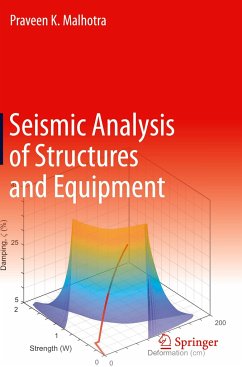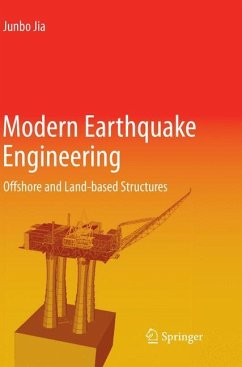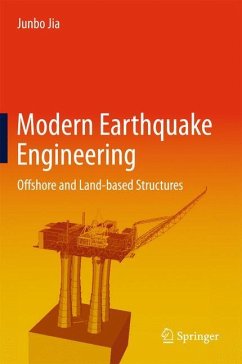
Seismic Analysis of Structures and Equipment
Versandkostenfrei!
Versandfertig in 6-10 Tagen
76,99 €
inkl. MwSt.
Weitere Ausgaben:

PAYBACK Punkte
38 °P sammeln!
This book describes methods used to estimate forces and deformations in structures during future earthquakes. It synthesizes the topics related to ground motions with those related to structural response and, therefore, closes the gap between geosciences and engineering. Requiring no prior knowledge, the book elucidates confusing concepts related to ground motions and structural response and enables the reader to select a suitable analysis method and implement a cost-effective seismic design.Presents lucid, accessible descriptions of key concepts in ground motions and structural response and e...
This book describes methods used to estimate forces and deformations in structures during future earthquakes. It synthesizes the topics related to ground motions with those related to structural response and, therefore, closes the gap between geosciences and engineering. Requiring no prior knowledge, the book elucidates confusing concepts related to ground motions and structural response and enables the reader to select a suitable analysis method and implement a cost-effective seismic design.
Presents lucid, accessible descriptions of key concepts in ground motions and structural response and easy to follow descriptions of methods used in seismic analysis;Explains the roles of strength, deformability, and damping in seismic design;Reinforces concepts with real-world examples;Stands as a ready reference for performance-based/risk-based seismic design, providing guidance for achieving a cost-effective seismic design.
Presents lucid, accessible descriptions of key concepts in ground motions and structural response and easy to follow descriptions of methods used in seismic analysis;Explains the roles of strength, deformability, and damping in seismic design;Reinforces concepts with real-world examples;Stands as a ready reference for performance-based/risk-based seismic design, providing guidance for achieving a cost-effective seismic design.












